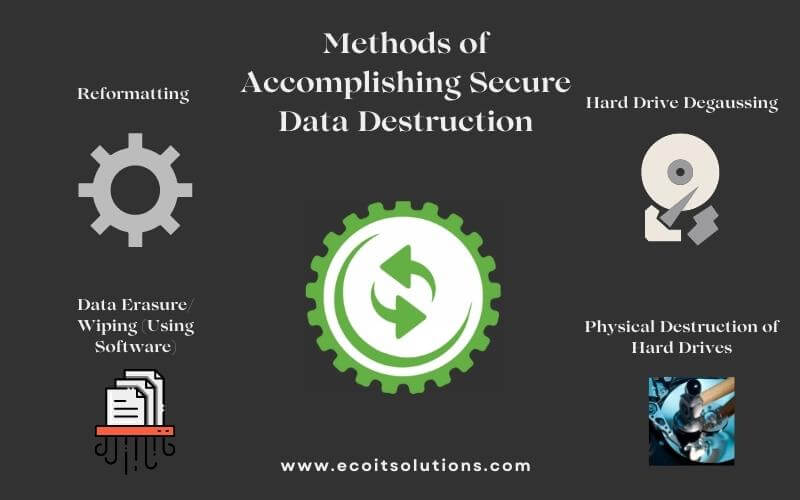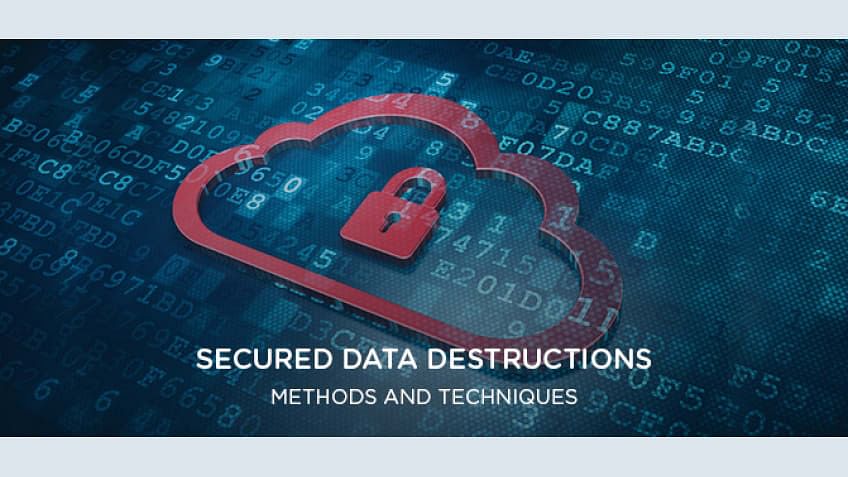How Proper Information Devastation Adds to Robust Computer Security Providers and Mitigates Threats of Data Breaches
In today's electronic landscape, the value of appropriate data devastation can not be overemphasized, as it acts as a fundamental part of detailed computer protection services. By executing effective information erasure methods, organizations not just safeguard sensitive details from unauthorized accessibility however also strengthen their compliance with governing frameworks - data destruction. However, the implications of poor data devastation extend past simple conformity; they can exceptionally affect a company's cybersecurity position and track record. Comprehending these dimensions increases vital concerns concerning the methods in place and their effectiveness in an age of intensifying cyber dangers.
Relevance of Data Destruction
In today's digital landscape, the significance of data damage can not be overstated. As companies significantly count on digital possessions, the prospective dangers related to data breaches and unauthorized gain access to intensify. Effective data damage is a critical component of an extensive info security technique, securing delicate details from coming under the hands of malicious actors.
When information is no longer needed, just deleting files or formatting hard disk drives is not enough. Residual information can commonly be recouped making use of readily available tools, positioning considerable hazards to both individuals and organizations. This emphasizes the requirement for robust information devastation methods that guarantee all data is irretrievably gotten rid of.
In addition, regulative compliance requireds, such as GDPR and HIPAA, stress the responsibility to safeguard sensitive information, including its appropriate disposal. Non-compliance can result in severe economic charges and lawful repercussions. data destruction. Therefore, integrating efficient information damage protocols not just enhances security yet additionally strengthens an organization's track record and dependability

Techniques of Secure Information Erasure
A number of effective approaches of protected information erasure can be utilized to make certain that sensitive details is permanently eliminated from storage gadgets. One widely acknowledged approach is data overwriting, which entails replacing existing information with random patterns several times. This method substantially reduces the possibilities of information recovery, although it might not be effective against innovative forensic techniques.

Physical damage is additionally a dependable method, where storage space gadgets are made pointless with shredding, squashing, or incineration. This technique makes certain that information can not be recouped by any kind of methods yet calls for mindful handling of unsafe products.
Last but not least, specialized software program tools designed for protected data erasure offer performances that conform with different erasure standards. These tools frequently include attributes like confirmation procedures to verify successful data destruction.
Employing these approaches in mix can improve data safety and security and mitigate the risks related to information violations, making sure that sensitive information is not inadvertently revealed.
Legal and Conformity Considerations
The methods employed for safe data erasure not just serve to protect delicate information yet likewise has to line up with legal and conformity frameworks regulating information protection. Organizations are needed to comply with various laws, such as the General Data Defense Policy (GDPR), the Medical Insurance Transportability and Accountability Act (HIPAA), and the Payment Card Market Information Safety Criterion (PCI DSS) These policies mandate details protocols for data taking care of and destruction, making sure that individual and sensitive information is irretrievably removed when no more needed.
Failure to abide with these lawful requirements can result in considerable fines, including fines and reputational damage. Furthermore, companies must maintain records of data devastation procedures, demonstrating compliance during audits or investigations. This paperwork not just protects versus lawful repercussions however additionally strengthens trust with stakeholders and clients, showcasing a dedication to data safety.
Incorporating legal and compliance considerations into data damage methods is vital for any organization. It lessens the threat of data violations and highlights a proactive technique to protecting sensitive info, eventually promoting a society of security and liability across the organization.
Effect On Cybersecurity Posture
Reliable information damage substantially improves an organization's cybersecurity posture by reducing the possible strike surface for cyber risks. When sensitive information is not effectively ruined, it stays available to malicious stars that can exploit this information for unapproved accessibility, identification theft, or corporate reconnaissance. By implementing robust data devastation procedures, companies can successfully reduce the risk of information breaches and boost their general safety and security framework.
Additionally, the protected disposal of outdated or unneeded information not only shields delicate information yet likewise helps organizations this page conform with industry laws and requirements. Failing to adequately ruin data can cause severe lawful repercussions and reputational damages, further compromising a company's cybersecurity position.

Ultimately, prioritizing effective data destruction is vital for promoting a durable cybersecurity pose, making sure that companies stay cautious versus advancing cyber hazards while safeguarding their important properties and stakeholders.
Ideal Practices for Organizations
Applying ideal methods for data damage is essential for organizations aiming to guard delicate info and alleviate cybersecurity dangers. Organizations need to develop a detailed data damage policy that describes procedures and responsibilities. This policy should abide by relevant regulations, such as GDPR or HIPAA, guaranteeing legal consistency.
Secondly, it is important to use accepted data sanitization methods, consisting of information wiping, degaussing, and physical devastation, customized to the kind of information and storage space medium. Employing certified specialists for information destruction solutions boosts the dependability of these techniques.
In addition, organizations ought to preserve a detailed stock of published here all data storage space devices, making sure that all obsolete or changed equipment undertakes destruction. Normal audits of data damage techniques can help determine weaknesses and boost conformity.
Staff member training is another crucial aspect, as team needs to comprehend the importance of information devastation and abide by established procedures. Organizations must record all data destruction activities to offer liability and traceability, which can be very useful during audits or in the occasion of a violation.
Conclusion

One commonly identified technique is data overwriting, which involves replacing existing information with random patterns numerous times.The techniques employed for secure information erasure not only offer to protect sensitive details but likewise has to line up with lawful and conformity structures controling data defense. These laws mandate certain protocols for data taking care of and devastation, guaranteeing that individual and sensitive information is irretrievably eliminated when no longer required.
By executing robust data damage protocols, organizations can successfully lessen the risk of data breaches and enhance their overall safety framework.
In final thought, correct data damage is vital for boosting computer security services and reducing the threats linked with data violations. - data destruction